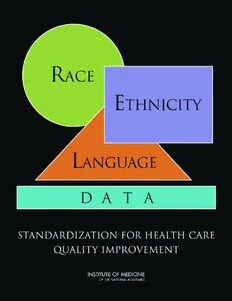
Race, Ethnicity, and Language Data: Standardization for Health Care Quality Improvement PDF
287 Pages·2009·2.47 MB·
Most books are stored in the elastic cloud where traffic is expensive. For this reason, we have a limit on daily download.
Preview Race, Ethnicity, and Language Data: Standardization for Health Care Quality Improvement
Description:
The goal of eliminating disparities in health care in the United States remains elusive. Even as quality improves on specific measures, disparities often persist. Addressing these disparities must begin with the fundamental step of bringing the nature of the disparities and the groups at risk for those disparities to light by collecting health care quality information stratified by race, ethnicity and language data. Then attention can be focused on where interventions might be best applied, and on planning and evaluating those efforts to inform the development of policy and the application of resources. A lack of standardization of categories for race, ethnicity, and language data has been suggested as one obstacle to achieving more widespread collection and utilization of these data. Race, Ethnicity, and Language Data identifies current models for collecting and coding race, ethnicity, and language data; reviews challenges involved in obtaining these data, and makes recommendations for a nationally standardized approach for use in health care quality improvement.
See more
The list of books you might like
Most books are stored in the elastic cloud where traffic is expensive. For this reason, we have a limit on daily download.
